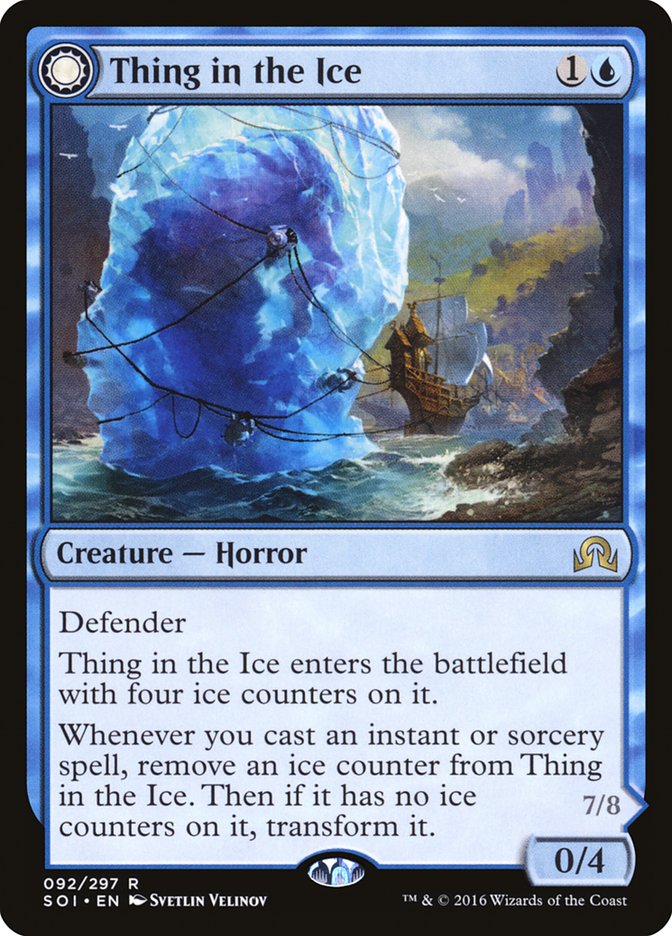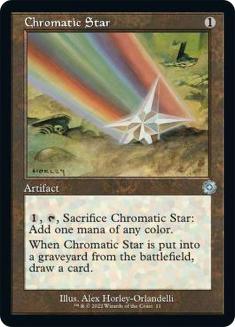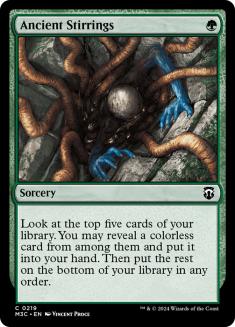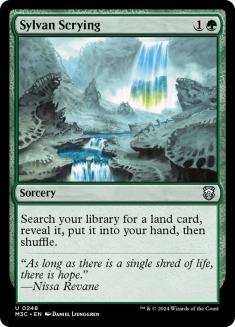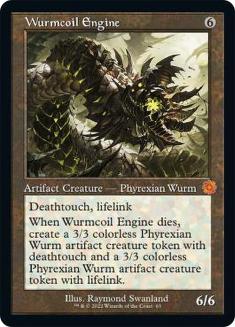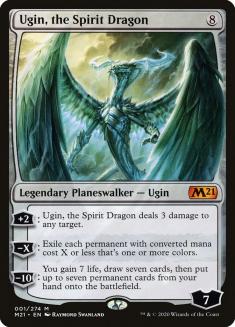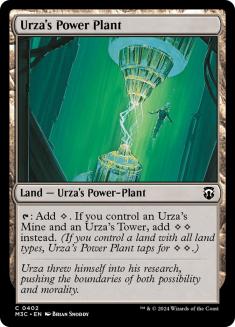Half the articles last week were all about trying to exploit Izzet Phoenix with specific decks. Everyone was pitching why Tron, Amulet Titan, Golgari Midrange, Death’s Shadow, or whatever was the deck to beat Arclight Phoenix this weekend.
And Izzet Phoenix still won the Magic Online Modern Quarterly, with the Top 8 being largely normal decks: three Grixis Death’s Shadow, two Izzet Phoenix, Humans, Dredge, and Mono-Green Tron. No inbred triple Nihil Spellbomb midrange. SCG Cincinnati was similarly normal, with only Eldrazi Taxes as an outlier.
After a lot of work on both sides of the Phoenix fence, I think a couple of articles were closer to the truth than all the archetype-level discussions. Unshockingly, one of those was by Gerry Thompson, originator of the term “The Truth,” and the other was Ben Friedman’s breakdown of the Grixis Death’s Shadow versus Izzet Phoenix matchup.
The way to beat Izzet Phoenix isn’t archetype-focused. Once you find a sweet exploit deck, they and everyone else can change their deck within a week or two to fight back. I didn’t recommend Whir Prison last week for this reason.
The secret to beating Izzet Phoenix is playing a good deck, and then playing that deck better to try to beat it.
The Izzet Phoenix Bind
Most of this playing better starts on Turn 0.
Izzet Phoenix is dominating Modern right now, but unlike Ironworks before it, you aren’t quite as explosive. Sure, Izzet Phoenix has a fair number of Turn 4 goldfish kills, but in the scope of Modern that is really emphasizing the “fair.”
But the reason Izzet Phoenix dominates the format is the other reason Ironworks was dominant: consistency and staying power. Watch Ross Merriam play Todd Anderson on Golgari Midrange in last week’s VS Live! and watch what happens in the end-game. Despite having the bigger effects, Golgari Midrange just gets bowled over. Izzet Phoenix doesn’t have inevitability in the traditional resource accumulation and big effects ways, but it has virtual inevitability via card selection and scaling finishers. Multiple Arclight Phoenixes or a giant Crackling Drake don’t give the Golgari Midrange plan a lot of room to stumble even going into Turn 10 or 15 of a game, especially when it has no way to stop drawing lands while Izzet Phoenix will rarely flood out.
This all comes back to a common question in Modern. Do you need a nut draw to compete? The answer keeps fluctuating, but for a lot of different reasons. A year ago in the Hollow One, Tron, Humans format, I pushed for aggressive mulligans because the best draws from each deck were multiple turns faster than the mediocre draws, creating an insurmountable gap. Then in the late 2018 Hardened Scales, Spirits, Ironworks metagame, I was more willing to keep average hands, as decks were so layered with natural interaction that even Game 1s trended towards weird scrappy outcomes.
We’ve come back to more aggressive mulligans and really understanding what your deck’s good draws are. If you keep some medium durdly hand, Izzet Phoenix is going to beat you almost no matter how good their draw is.
Dredge
Creatures (18)
Lands (19)
Spells (23)

Dredge has the “keep a good hand” part baked in, because with Dredge you basically only have functional hands or piles of Creeping Chill. If you keep a bad hand with Dredge, you were probably losing to Soldier Tribal, let alone the best deck in the format.
Where Dredge’s tactics against Izzet Phoenix come up is playing against their interaction. At SCG Philadelphia two weeks ago, we got to see eventual winner Austin Collins lock up his Top 8 by beating Abe Corrigan on Dredge.
The two lines Dredge has to consider against Izzet Phoenix are getting all its creatures Thing in the Ice’d and losing key pieces to Surgical Extraction. In both cases, you get fiddly.
Against Surgical Extraction that usually means keeping fetchlands at the ready to respond to Surgical Extraction on Bloodghast and discarding uniquely named dredge spells to Cathartic Reunion. It also means thinking about how to keep your hand full with Life from the Loam if they start going after your creatures so your eventual Conflagrate can team up with Creeping Chill and close the gap. Think ahead to how you plan on winning if you are missing a specific piece of the engine, or take the Sam Black route and sideboard a bit of everything out to minimize the impact.
Thing in the Ice presents similar issues. Step one is thinking earlier about how you can preserve four cards in hand with a graveyard Conflagrate to kill it before it transforms, but what if that fails? If you aren’t just dead, how are you going to rebuild if all of your creatures end up back in your hand? A few options with varying degrees of success: just finish them with hasted Bloodghasts you recast or discard to Faithless Looting, use the returned creatures to fuel a giant Conflagrate, or cast a Stinkweed Imp from hand and hope it holds. “Die horribly” is also on the table, but not generally a fan favorite.
In general, having options involves having three or four lands and more cards in hand. Value having and casting Life from the Loam very highly once you are out of the initial explosive setup stages.
There’s a lot of luck here in terms of what you dredge up and when, so this matchup tends to feel massively hopeless in games you lose. It’s more about knowing the possible routes to victory so you can play to your accessible outs, which is probably the most like real Magic playing Dredge has ever been.
Humans
Creatures (37)
- 4 Meddling Mage
- 4 Noble Hierarch
- 4 Phantasmal Image
- 4 Champion of the Parish
- 4 Thalia, Guardian of Thraben
- 4 Mantis Rider
- 4 Reflector Mage
- 4 Thalia's Lieutenant
- 3 Kitesail Freebooter
- 2 Militia Bugler
Lands (19)
Spells (4)

The Cedric Phillips metric from a year ago is still in full effect: if it doesn’t have a one-drop, mulligan it. You used to be able to get away with specific draws on the play with a hatebear and a good follow-up, but I struggle to see that these days. Most of the decks soft to hatebears are gone. You aren’t keeping hands with four lands and no one-drop. Are you actually going win the game if only cast a single spell Turn 4 and didn’t start on Turn 1? You aren’t keeping hands with four lands; are you even likely to have a multiple-play Turn 4 without a Noble Hierarch or Aether Vial to start?
The secret secondary effect of this is that sideboarding out one-drops is just off the table. Even against the grindiest decks I would be hard-pressed to cut more than one Aether Vial. This might also be because you just don’t have room for the sideboard packages of four Sin Collector, two Dire Fleet Daredevil, one Whirler Rogue anymore. You are too busy stacking up Dredge hate and anti-Ensnaring Bridge cards and other powerful answers.
What about playing the actual games? Luckily the reason Humans is good again is that Izzet Phoenix is playing fewer Gut Shots and we can pretend that card doesn’t exist. They also aren’t super-dense on removal, so you rarely have to play around cascading failures where your Meddling Mage dies to Lightning Axe that then lets them Lightning Bolt something else and so on down a chain.
That means all your counterplay involves their Thing in the Ice.
Option one is just removing their Thing in the Ice. Reflector Mage is just easy mode, and it is often better just to use it as soon as possible to lock out a potential second Thing in the Ice rather than trying to milk a couple of spells for ice counters first.
Option two is just constraining their ability to cast spells. Thalia, Guardian of Thraben is obviously great against their deck, but the biggest impact comes when it makes Awoken Horror a “two or three turns from now” issue and not a “next turn” one. Meddling Mage and Kitesail Freebooter can also work here by attacking cantrips. Meddling Mage on an in-graveyard Faithless Looting comes up in longer games, but if you are gunning for cantrips over Lightning Bolts, you should default to Manamorphose.
Option three is to stop them from casting it. Meddling Mage on Thing in the Ice is a fine backup second turn on the play. Any later than on the play Turn 2, and odds are they don’t have it or they would have cast it.
Option four is to survive the first attack and rebuild. Against a later Thing in the Ice, you can often leave Aether Vial untapped to flash in a chump blocker before casting the rest of everything. If you take the hit, your life total really matters. While Humans doesn’t have many ways to damage itself, it’s worth thinking about Horizon Canopy taps that bring you to life totals that are seven plus multiples of three. The difference between fourteen and thirteen is an extra Arclight Phoenix or Lightning Bolt hit if a Thing in the Ice ends up connecting.
Grixis Death’s Shadow
Creatures (14)
Lands (17)
Spells (29)

Read Ben Friedman’s article. To literally copy his headlines: draw first, Stubborn Denial Manamorphose, aim for seven life.
Golgari Midrange
Creatures (16)
Planeswalkers (4)
Lands (24)
Spells (16)

I’ll point to the same match on VS Live! as I did earlier. You don’t beat Izzet Phoenix by answering all its threats, which is why Azorius Control isn’t discussed in this article.
The problem cards for Izzet Phoenix out of Golgari Midrange are the creatures that don’t die to Lightning Bolt. Tarmogoyf and some nonsense make a fine hand. A single Scavenging Ooze or Dark Confidant is risky but reasonable. Hands with Liliana of the Veil as your threat must have double discard backing. If your hand starts on all answers, I would strongly consider six cards instead.
There isn’t a ton out of the ordinary in gameplay compared to a typical Lightning Bolt attrition matchup for Golgari. Jam Dark Confidant early because it gives the smallest window for them to find a Lightning Bolt or to hit you for large amounts. Don’t cast Tarmogoyfs or Scavening Oozes that die to a Bolt. There isn’t even a big decision on what removal to line up with what threats, because Assassin’s Trophy is both the one you want to cast later and the one that is the best if held for a Crackling Drake or Pyromancer Ascension rather than Thing in the Ice. Just be aware that once you maneuver out of the early turns, you are the beatdown.
Mono-Green Tron
Creatures (7)
Planeswalkers (6)
Lands (19)
Spells (28)

Mono-Green Tron has had a big resurgence lately because it falls nicely into the slot of being slightly more powerful than Izzet Phoenix, reliably more powerful than Izzet Phoenix, hard for Izzet Phoenix to interact with, and good enough to brawl with the rest of the field. Previously, it was less powerful than Ironworks, less reliably powerful than Ironworks, and bad at interacting with Ironworks, giving it the crowning upside of “not terrible against the field.”
Similar to Humans, Tron has pretty clear preconditions on hands. If it doesn’t Tron up, don’t keep it.
Once you establish that, you should be playing games to maximize your odds of producing Tron on Turn 3. This is especially true on the draw, where a Turn 4 Tron might be a little too slow.
Take a look at this hand. The basic consideration is that you should be casting Ancient Stirrings before Sylvan Scrying, so regardless of whether it hits Urza’s Mine or Urza’s Tower, the Sylvan Scrying always finds the right third piece. But you should not be leading on Forest, Ancient Stirrings. It’s better to lead on Chromatic Star, give yourself another draw step and the Star draw to find a different Tron piece, and then have the option to Sylvan Scrying into Turn 3 Tron.
The worst-case scenario is you still get to cast Ancient Stirrings on two, play your second Tron land, and Sylvan Scrying on three. Guess what? You still have eight mana on Turn 4. Or just mise the third Tron piece on Turn 3 off the top. Again, just more outs to have your best possible draw. Another spot this often comes up is with Expedition Map versus Chromatic Star leadoffs when your hand has Sylvan Scrying and only one natural Tron piece.
Another smaller maximization is setting up for Urza’s Tower to be the last piece you find when you aren’t cleanly playing the last Tron piece on untapped lands. When you won’t have the full Tron mana on that first turn, it’s important to have the most mana to land an Oblivion Stone or cycle off nonsense.
The reason these plays are so important is that Tron can lose to Izzet Phoenix’s good draws if it doesn’t set up something interactive early. On the draw you definitely need that Wurmcoil Engine on the third turn, because just an Oblivion Stone on Turn 4 leads to death by Lightning Bolt and those Arclight Phoenixes coming back on Turn 5. On the play, if you don’t have Karn Liberated on Turn 3, you need to give yourself the maximum odds of drawing the bigger interactive piece a turn later.
Amulet Titan
I’m going to spare you the full Amulet Titan play-by-play details and stick to the broad strokes.
A large percent of Amulet Titan hands you keep will be missing at least one of the three pieces: a Primeval Titan, an Amulet of Vigor, or fast mana development. The hands with fast mana development are always going to be the best, barring multiple Amulet hands. You can always topdeck an Amulet of Vigor and a Primeval Titan at any point and kill them. If you draw Sakura-Tribe Scout on Turn 3, it doesn’t do anything.
Creatures (13)
Lands (28)
Spells (19)

Piotr Glogowski put up a solid non-Top 8 performance in this weekend’s Magic Online Modern Quarterly with an Amulet Titan update that lines up really well with an Izzet Phoenix world.
The big thing to notice is this deck has none of the artifact and land tutor targets you would expect. Instead it has a Zacama, Primal Calamity; Serum Visions; and lands that cast spells.
The logic is that every tutor target outside the core combo kill only helps Amulet Titan in a narrow set of matchups. Bojuka Bog is just good versus Dredge and other worse graveyard decks. Ghost Quarter is just good against Mono-Green Tron. Engineered Explosives is just good against Humans.
Every tutor target you add increases your odds of a non-functional hand in a deck that already has a high rate of that.
You beat Izzet Phoenix by being a combo deck, not with weird post-Primeval Titan tutor targets.
The one-ofs that remain here in the maindeck are multipurpose. Khalni Garden produces bodies to chump, attack, or sacrifice to Liliana of the Veil. The lifegain of Kabira Crossroads applies across the board. Pact of Negation counters anything. Zacama, Primal Calamity is just the big general answer, and once you resolve Primeval Titan you will have the mana to cast it. Why Tolaria West for a smaller effect like Walking Ballista at that point when you can just immediately go ham on everything?
I love this change, and I think a lot more decks should be changing their approach to match. Another example: the TitanShift decks that have succeeded lately are light on interaction, leaning more on alternate wins like Prismatic Omen or Through the Breach.
If you are going to lose to Izzet Phoenix when your deck has a subpar draw, give yourself the most chances to draw well.


